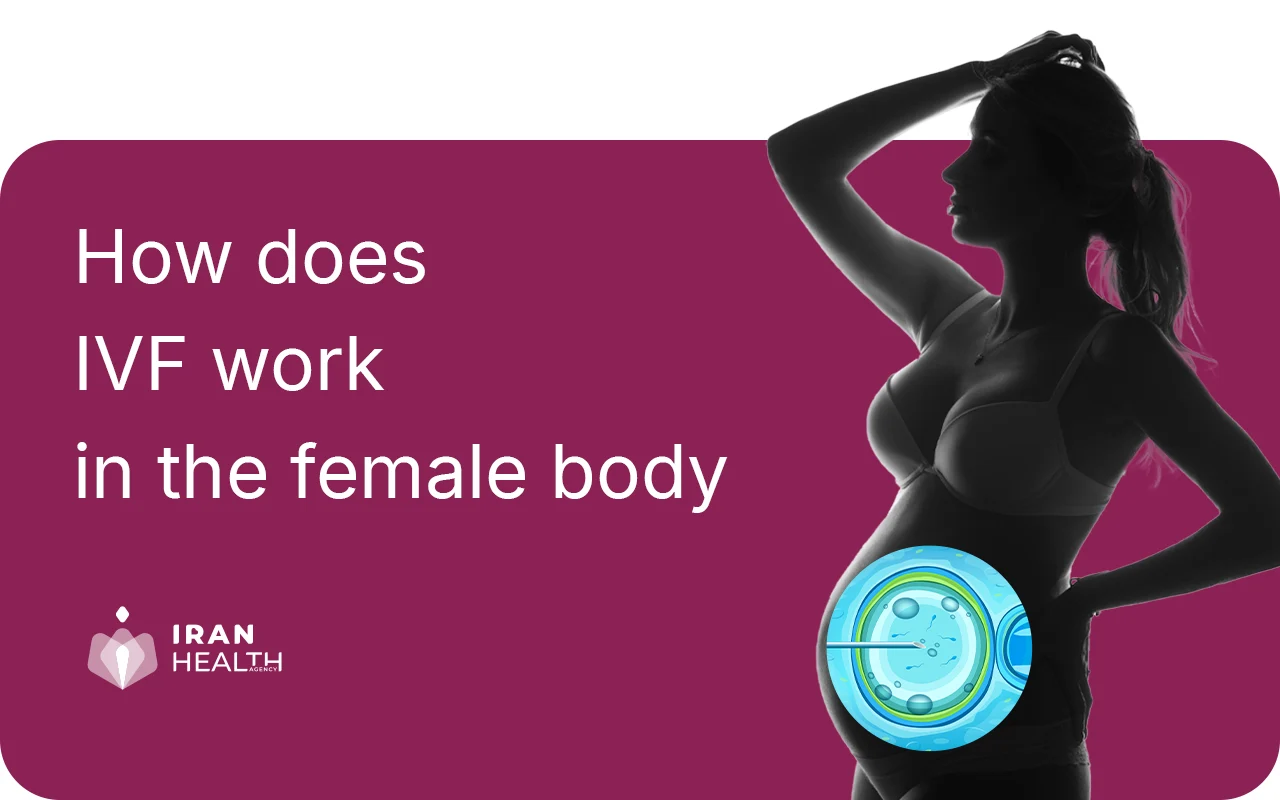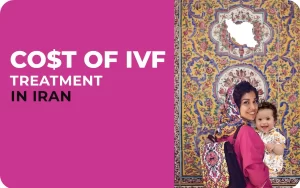IranHealthAgency a medical tourism company explains how hormones and medical procedures interact to facilitate fertilization and implantation. For those considering IVF in Iran, expert care ensures a thorough and informed approach to this transformative process.
Here are the steps that help you understand how IVF works in the female body in a simple way.
| Stage | Description |
| 1. Suppression | Medications suppress the natural menstrual cycle for better control over ovulation timing. |
| 2. Ovarian Stimulation | Fertility hormones are given to stimulate the ovaries to produce multiple eggs. |
| 3. Monitoring | Regular ultrasounds and blood tests monitor the development of the follicles containing the eggs. |
| 4. Egg Retrieval | A minor surgical procedure collects mature eggs from the ovaries using a thin needle. |
| 5. Fertilization | Retrieved eggs are fertilized in a lab with sperm; ICSI may be used to inject sperm directly into an egg. |
| 6. Embryo Culture | Fertilized eggs (embryos) are cultured in the lab for several days to develop. |
| 7. Embryo Transfer | A thin catheter transfers one or two healthy embryos into the woman’s uterus. |
| 8. Post-Transfer Support | Hormone medications are given to support the uterine lining and improve the chances of implantation. |
Below we go into detail for how you can prepare for IVF and how to deal with this situation.

What happens to a woman’s body during IVF?
During IVF, a woman’s body undergoes a series of hormonal treatments and medical procedures aimed at enhancing fertility and enabling successful embryo implantation. The following stages outline what typically occurs:
- Suppression of Natural Cycle: Initially, medications are administered to suppress the natural menstrual cycle. This allows for better control over ovulation timing and enhances subsequent treatments’ effectiveness.
- Stimulation of Ovaries: After suppression, fertility hormones (commonly follicle-stimulating hormone, FSH) are introduced to stimulate the ovaries to produce multiple eggs instead of the usual single egg per cycle. This increases the number of eggs available for fertilization.
- Monitoring: Throughout this phase, regular ultrasound scans and blood tests are conducted to monitor the development of the follicles (which contain the eggs). Once the follicles are mature, another hormone (human chorionic gonadotropin, hCG) is given to trigger final maturation.
- Egg Retrieval: When the eggs are ready, a minor surgical procedure is performed to retrieve them. This is usually done under sedation, using a thin needle guided by ultrasound to collect eggs from each ovary.
- Fertilization: The retrieved eggs are then fertilized in a laboratory using sperm from a partner or donor. In some cases, a technique called intracytoplasmic sperm injection (ICSI) may be used, where a single sperm is injected directly into an egg.
- Embryo Culture: The fertilized eggs (now embryos) are cultured in the lab for several days (typically up to six) to allow for development. The best-quality embryos are selected for transfer.
- Embryo Transfer: Finally, a thin catheter transfers one or two healthy embryos into the woman’s uterus. This procedure is relatively simple and does not usually require sedation.
- Post-Transfer Support: After embryo transfer, hormone medications may be given to support the uterine lining and enhance the chances of successful implantation.
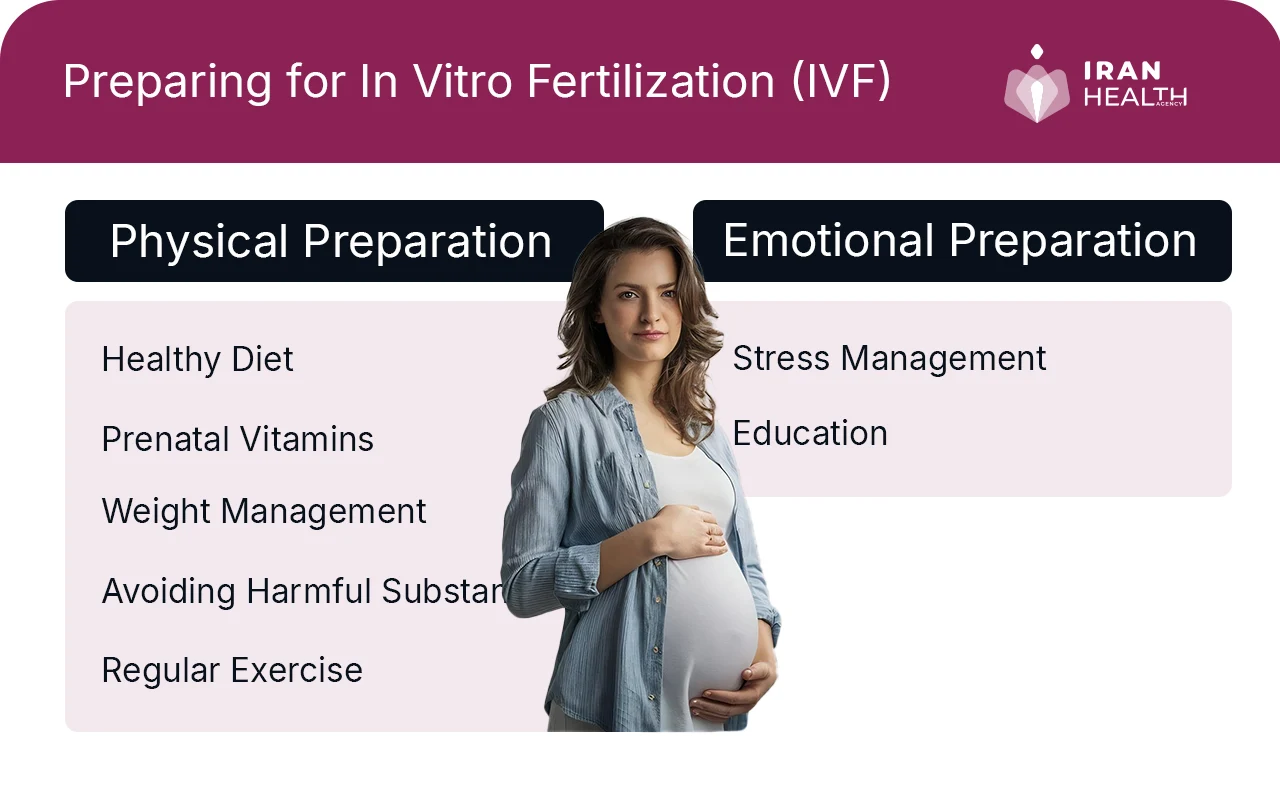
Preparing for In Vitro Fertilization (IVF)
Getting ready for IVF means getting prepared mentally and physically. These are essential steps women can take:
- Physical Preparation
- Healthy Diet: A balanced diet rich in fruits, vegetables, whole grains, and lean proteins can improve overall health and fertility. The Mediterranean diet is often recommended due to its nutrient-dense nature.
- Prenatal Vitamins: Starting prenatal vitamins, particularly folic acid, can enhance egg quality and reduce risks during pregnancy.
- Weight Management: Maintaining a healthy weight (BMI between 20 and 30) is crucial, as obesity can negatively impact fertility and IVF success rates.
- Avoiding Harmful Substances: Quitting smoking, reducing alcohol intake, and avoiding recreational drugs are essential steps in preparing for IVF.
- Regular Exercise: Moderate physical activity can help manage weight, reduce stress, and improve hormonal balance.
- Emotional Preparation
- Stress Management: Techniques such as yoga, meditation, and acupuncture can help alleviate stress associated with fertility treatments. Joining support groups can also provide emotional support during this challenging time.
- Education: Understanding the IVF process can reduce anxiety. Engaging with healthcare providers to clarify doubts can foster confidence in managing treatment expectations.
By getting ready in these ways and learning how IVF works in the female body, women can improve their chances of getting pregnant with this assisted reproductive technology.
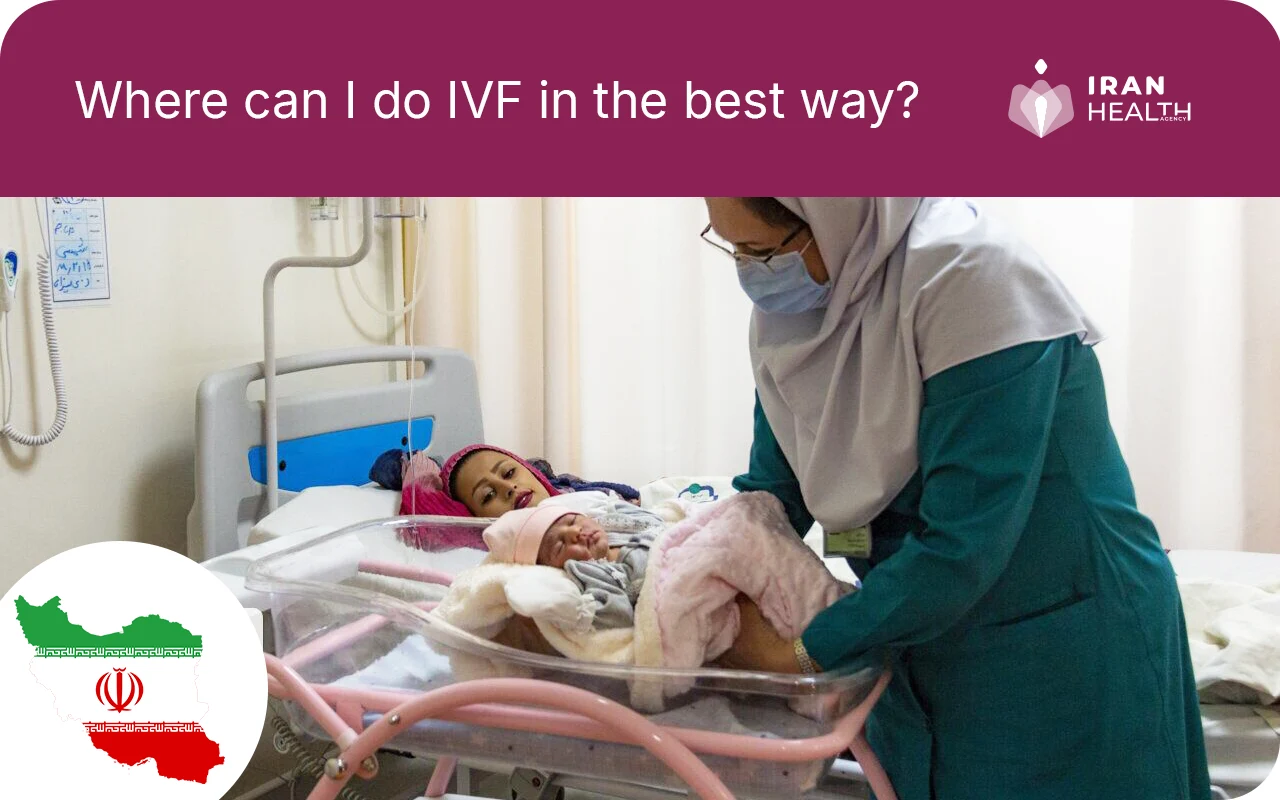
Where can I do IVF in the best way?
Let us explain again why we discuss the title How does IVF work in the female body? (What is the point of repeating?), not to mention how important it is for your family to know about testing.
- Success Rates Go Up: Annual pregnancy rates increase by an overwhelming margin if women get adequately tested before they plan to conceive. People should especially use their eggs to do it.
- Problems Can Be Spotted Early: Identifying reproductive challenges as quickly as possible helps a scientist decide on treatment strategies, and the work can be done faster than if a person is confused about something.
When you are put at a lower risk for yourself and the baby when you undertake prenatal tests, the tests may correctly diagnose and treat problems.
- Informed Decisions: Using collected data from pre-treatment, you can make sound conclusions about your reproductive capabilities and how Invitro-Fertilization processes should have proceeded.
- Peace of Mind: Knowing you’ve taken all the necessary steps to optimize your chances of success can provide significant peace of mind during this emotional journey.
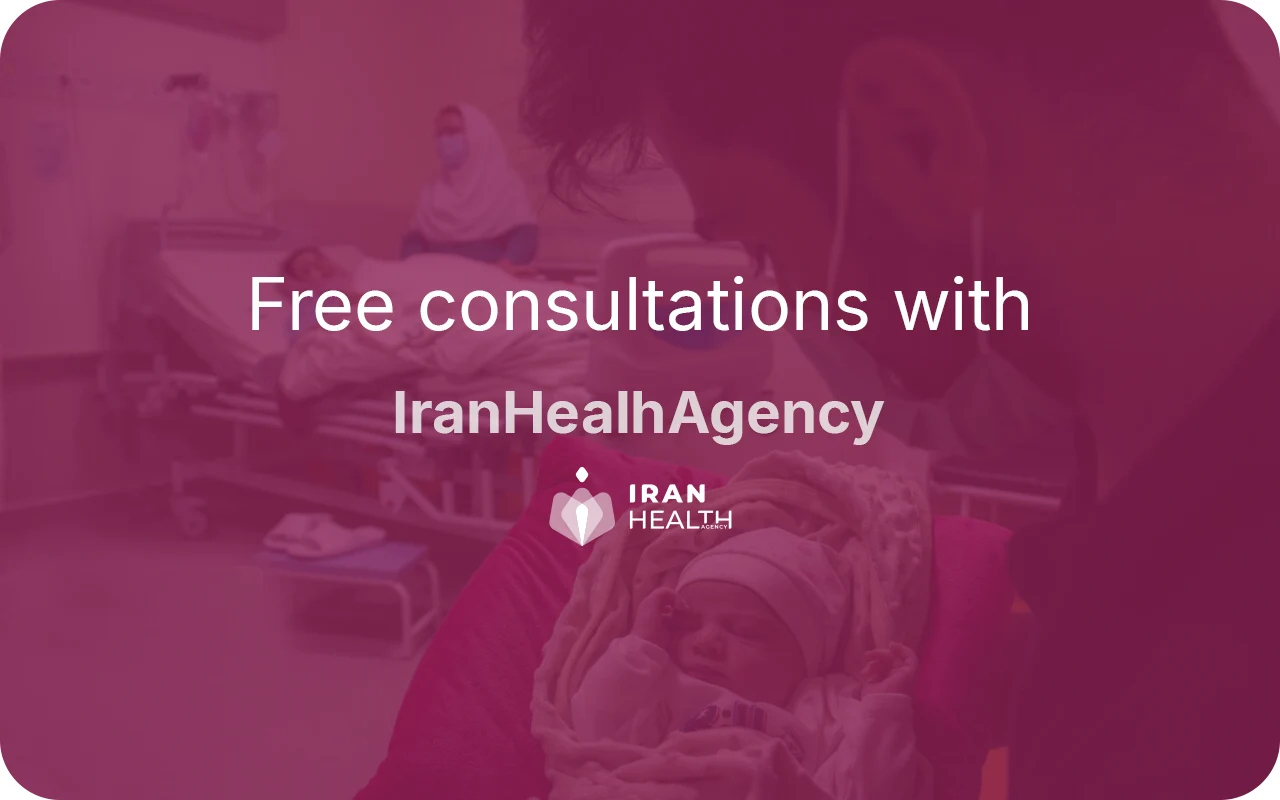
Free consultations with IranHealthAgency
Are you ready to take the first step?
Schedule a consultation with a top fertility specialist today to discuss pre-IVF testing and explore the possibilities of achieving your dream of a family.
If you come to us with this title: How does IVF work in the female body? We consider a good discount so that you can have a smooth IVF journey in Iran. To contact us, click on the link below:
